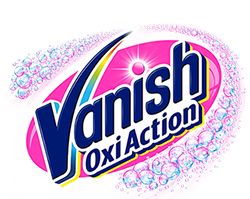Hardest To Remove Stains on Clothes
Stains can strike at any time and can ruin your clothes, and your day, especially if they land on your favourite item of clothing. But why do some stains seem harder to get out than others?

Stains can be broken down into four different groups: enzymatic, oil-based, oxidisable and particulate – with many stains belonging to more than one group (combination stains).
Enzymatic Stains[1]– caused by organic substances such as egg, grass, chocolate and baby food[2]
Greasy / Oil Stains[1] – such as hand lotion, hair mousse, lard and butter[2].
Oxidisable Stains[1] – key ingredient in alcoholic drinks, coffee and tea (without milk) and soft drinks[2].
Particulate Stains[1] – such as mud and ground in dirt[1].
Combination Stains[2] – these stains can be a mix of two or more of the above stain types. Combination stains can include a wide variety of stains from lipstick to tomato ketchup.
Whatever the stain, your usual washing detergent alone might not be able to remove it completely – it will only fade the toughest of stains. You may encounter the following stains in your weekly wash, but they will require more effort to get out, something laundry detergent can’t handle alone. By using Vanish alongside your detergent you have more chances to have your stain removed.
Egg (Enzymatic Stain)
Egg can be difficult to remove from your clothes, and it is always better to deal with this particular type of stain as soon as possible. But then, you may not be able to wash the stain off right away, especially if you’re out of your house at the time. At least blot out as much of the stain as you can, and then always rinse the item in cold water. Include Vanish in your wash to get rid of egg stains quickly and effectively.
Mud (Particulate Stain)
Children are prone to getting dirty – whether it’s after a sunny day in the park or a rainy day spent jumping in muddy muddles. The first step in removing the mud stain, no matter how deeply it is ingrained, is to let it dry and scrape off the excess. After that, you are free to pre-treat and wash using Vanish!
Check out our detailed guide on how to remove mud stains here.
Grass (Enzymatic Stain)
Grass is great to walk on and it cools the eyes as well, but its most troublesome property is that the bright green chlorophyll and the other pigments in it create the toughest stains. This happens because these pigments are similar in structure to most fabrics – thus, they they actually penetrate and bond with the fabric on contact.
Check out our detailed guide on how to remove grass stains here.
Chocolate (Greasy/Oil Stain[3])
A sweet treat for all the family can also be a difficult thing to remove from clothes.
It’s easy to smudge a missed bit of chocolate on your hand into your jeans, like it is for a child’s sticky fingers to be wiped on their clothes - and there is no hiding the rich chocolate colour.
Unlike most other stains, you can make life easier by leaving the stain to dry, before scraping the excess chocolate off. Check out our detailed guide on how to remove chocolate stains here.
Oil (Greasy / Oil Stain)
Because some oil stains aren’t brightly coloured, they may not be as obvious at first. However, they do tend to leave materials darker in the area that they stain[4]. Typically, an oil stain will appear grey on a white coloured cloth. Before tackling this type of stain it’s best to use a dry absorbent cloth and dab the oil to remove any excess.
Check out our detailed guide on how to remove oil stains here.
Detergent alone might not be enough to remove some stains and the more challenging ones might require extra help to shift. By incorporating Vanish into your washing routine you are guaranteed to remove some stains with just the first use, so you no longer have to battle with repeat washes and at worst, throwing away your clothes.
[1] https://edu.rsc.org/resources/chemistry-in-your-cupboard-vanish/13.article
[2] https://en.wikipedia.org/wiki/Stain
[3] http://housekeeping.about.com/od/stainremoval/ht/Remove-Chocolate-Stains-5-Easy-Tips.htm
[4] http://housekeeping.about.com/od/stainremoval/ht/Removing-Cooking-And-Vegetable-Oil-Stains.htm
